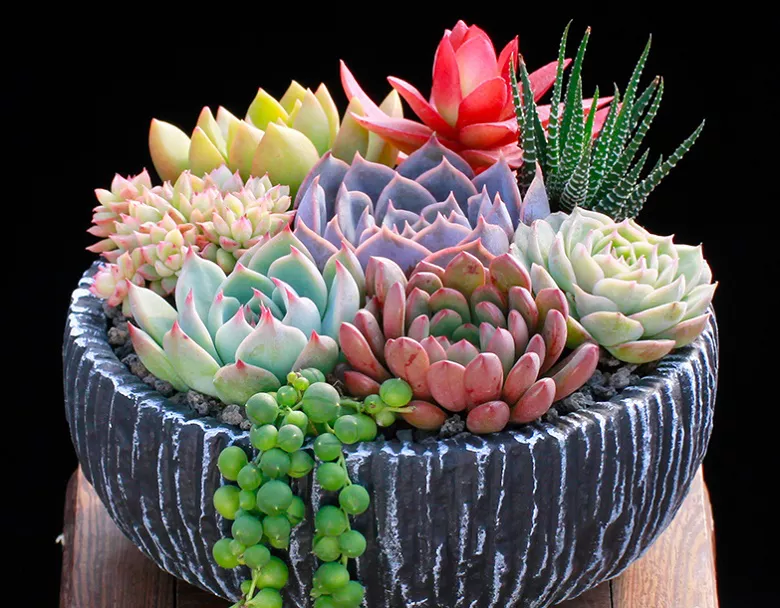Succulents, with their unique and captivating forms, have become popular choices for indoor and outdoor gardens. To ensure their optimal growth and health, proper soil composition is crucial. Layering soil for succulents is a technique that promotes excellent drainage, root health, and overall plant vitality. This article serves as a comprehensive guide to effectively layering soil for succulents, providing insights, tips, and step-by-step instructions to create a nurturing environment for these remarkable plants.
Understanding the Importance of Soil Layering
Soil layering is a technique that mimics the natural growing conditions of succulents. It allows for improved drainage, prevents waterlogging, and promotes healthy root development. By layering the soil, you create an environment that supports the unique needs of succulents, including their ability to store water and withstand periods of drought.
Choosing the Right Container
Selecting an appropriate container is the first step in preparing the soil layers for succulents. Opt for containers with drainage holes to ensure excess water can escape. Suitable containers include terracotta pots, ceramic containers, or plastic pots with drainage holes. The size of the container should accommodate the succulent’s root system and allow for future growth.
Selecting the Soil Components
For effective soil layering, you will need a combination of different soil components that promote drainage and root health. The primary components include a well-draining potting mix, perlite, and coarse sand. A recommended ratio is 2 parts potting mix, 1 part perlite, and 1 part coarse sand. The potting mix provides nutrients and organic matter, while perlite and coarse sand enhance drainage and aeration.
Creating the Bottom Layer
Start by adding a layer of coarse sand at the bottom of the container. This layer acts as a foundation, allowing excess water to drain freely and preventing the soil from becoming compacted. The coarse sand also improves airflow to the roots, promoting healthy root development. Aim for a layer that is approximately 1 inch thick.
Adding the Drainage Layer
On top of the coarse sand, add a layer of small pebbles or gravel. This layer further enhances drainage by creating air pockets between the particles. The drainage layer prevents water from accumulating at the bottom of the container and potentially causing root rot. Aim for a layer that is approximately 1 to 2 inches thick.
Layering the Potting Mix
The next layer consists of the potting mix, which provides essential nutrients and organic matter for the succulents. Fill the container with the potting mix, leaving enough space to accommodate the root system of the succulents. Gently pat the potting mix to ensure it is evenly distributed and slightly compacted.
Incorporating Perlite
To improve drainage and aeration, sprinkle a layer of perlite on top of the potting mix. Perlite is a lightweight volcanic rock that helps create air pockets in the soil, allowing excess water to drain away from the roots. Distribute the perlite evenly across the surface of the potting mix.
Planting the Succulents
After the soil layers are prepared, it’s time to plant the succulents. Gently remove the succulents from their nursery pots, being careful not to damage the roots. Create a small hole in the potting mix and place the succulent into it, ensuring the roots are adequately covered. Firmly press the soil around the base of the succulent to provide stability.
Top Dressing with Gravel or Stones (Optional)
For aesthetic purposes and to further enhance drainage, you can consider adding a layer of decorative gravel or stones on top of the soil. This layer acts as a protective barrier, preventing water evaporation and reducing weed growth. It also adds a visually appealing touch to your succulent arrangement.
Caring for Succulents in Layered Soil
After planting, care for succulents in layered soil by providing them with the appropriate amount of sunlight, watering, and maintenance. Succulents generally thrive in bright, indirect light. Adjust watering practices to avoid overwatering, allowing the soil to dry out between waterings. Monitor the moisture level by inserting your finger into the soil to ensure it is adequately hydrated but not waterlogged. Regularly inspect the plants for signs of pests, diseases, or nutrient deficiencies, addressing any issues promptly.
Conclusion
Layering soil for succulents is a fundamental technique that promotes excellent drainage, root health, and overall plant vitality. By understanding the importance of soil layering, selecting suitable containers, choosing the right soil components, creating the appropriate layers, planting succulents with care, and providing proper care and maintenance, you can create a nurturing environment for these captivating plants. Enjoy the process of layering soil for succulents and witness the rewards as your succulents thrive, showcasing their vibrant colors and unique forms. With the right soil foundation, succulents will flourish and bring enduring beauty to your indoor or outdoor garden.


